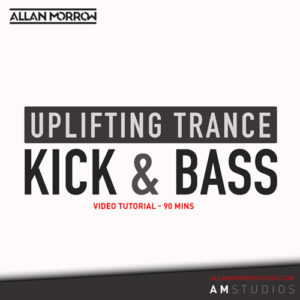Trance Kick & Sub Bass Relationship – Think before you do this!
Understanding Frequency and Time in Mixing: The Pitfalls of Unnecessary EQing
Today, we’re going to delve into a common mistake that many music producers make when it comes to mixing their tracks. Oftentimes, individuals find themselves unnecessarily EQing certain elements of their mix in an attempt to make room for other sounds. Let’s explore why this practice may not always be the most effective approach.
The Misconception of Frequency Clashing
In the world of music production, it’s not uncommon for producers to encounter the issue of frequencies clashing, particularly between elements like kicks and basslines. However, a common error arises when individuals attempt to address this issue without considering the crucial relationship between frequency and time.
Identifying the Problem
Many producers fall into the trap of using techniques such as EQing to duck frequencies in their sub bass to make way for the kick. While this may seem like a logical step to prevent clashes, it becomes redundant when the elements are not even playing simultaneously.
The Importance of Timing
When it comes to frequency management, it’s essential to consider both the frequency content and the timing of the elements in question. Simply put, if the kick and sub bass are not playing at the same time, there’s no need to adjust the frequencies to accommodate the kick.
Rethinking EQing Strategies
It’s crucial for producers to reassess their EQing strategies and not rely solely on tutorials or conventional practices. Instead of blindly following techniques, it’s essential to understand the context of your mix and make informed decisions based on the specific timing and frequency interactions between elements.
Enhancing Your Mix
Rather than EQing to make room for a kick that isn’t playing simultaneously with the sub bass, focus on enhancing the overall mix by considering how elements interact both in terms of frequency and timing. If EQ adjustments are necessary for sonic clarity and balance, ensure they are made thoughtfully and purposefully.
Conclusion
In conclusion, the misconception of frequency clashing and the subsequent over-reliance on EQing to resolve this issue can hinder the overall quality of a mix. By understanding the critical relationship between frequency and time, producers can make more informed decisions when it comes to managing elements in their tracks. Remember, effective mixing is not just about addressing frequency conflicts but also about considering the timing of elements to create a cohesive and harmonious sound.
For more Trance Bass tutorials ▶ https://allanmorrowstudios.com/trance-music-category/kick-bass/
In this quick Trance Bass tutorial I’ll show you how you can create more interesting Trance bass lines through the use of different note lengths and velocities.
Struggle with your Trance basslines? Check out these in-depth tutorials…
Join the AM Studios production community for FREE below for exclusive production tips and trick like the one above!





